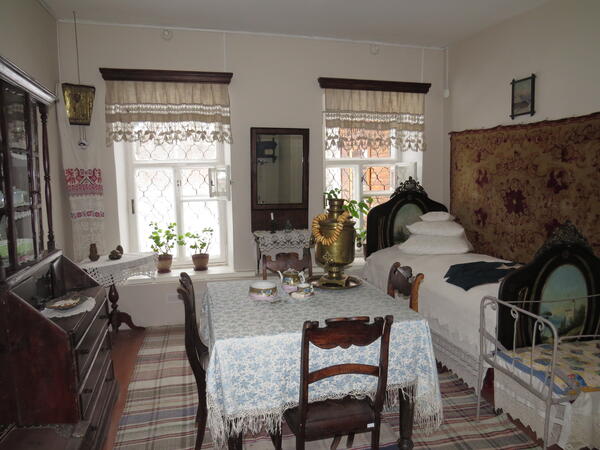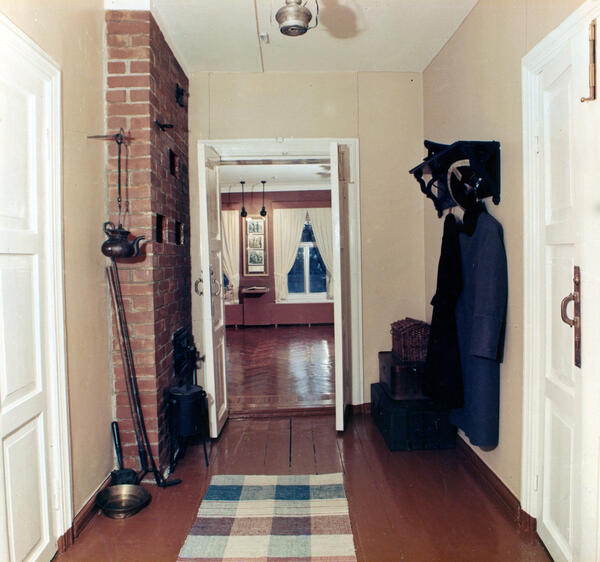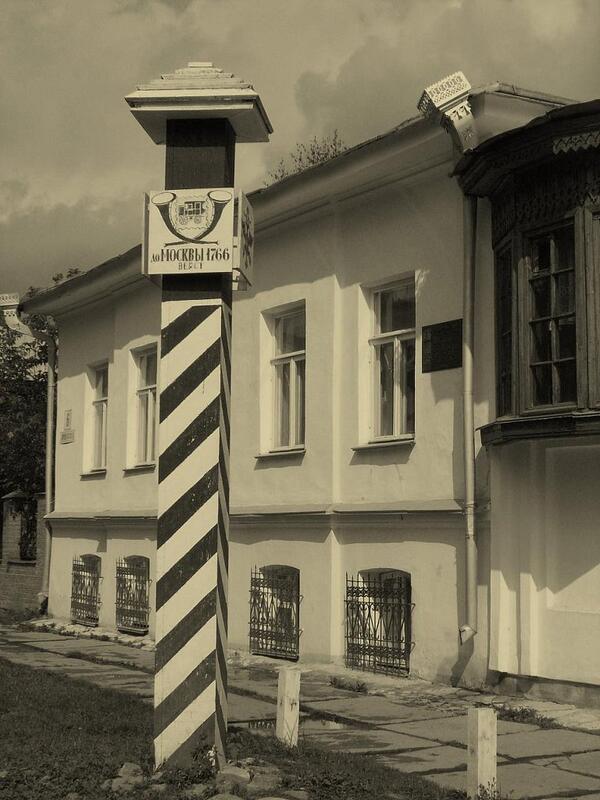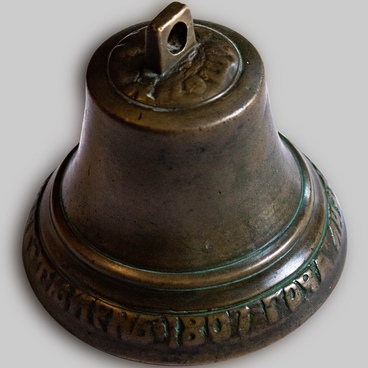In the postman’s room, you can see the vest of a 19th-century postal worker. The vest is dark green, with buttons featuring the postal office emblem: two arrows and two horns. The uniform article reminds of the postal past of the house-museum and refers us to the works of the writer FyOdor ReshEtnikov, native of the Urals region. The writer was the son of a postal worker, and it is no surprise that he makes postmen protagonists in some of his works. The most revealing was the character sketch of a postman named MAksya from the eponymous story. Maksya had an unhappy childhood: he suffered physical abuse from his drunk father and was left without parents at an early age. He grew up and got a job as a postman, but his career got off to a bad start, and ‘all his clothes, acquired early in his service at the post office, fell apart, and there was no money to have new ones made.’ It is unknown when and under what circumstances this sketch was written, but, presumably, Maksya’s story was based on the fate of the writer’s father. However, we have little information about Reshetnikov’s father. It is known that in the last few years of his life, he served as a postman at the Krasnoufimsk post office.
Postman's vest
Creation period
second half of the 19th century
Dimensions
55x39 cm
Technique
cloth, brass, rep, lining fabric, machine stitchwork, manual stitchwork
Collection
Exhibition
4
Open in app#8
Postman’s vest
#9
#10
In the postman’s room, you can see a 19th-century postman’s vest
#11
The history of the postal uniform dates back to 1784. During the reign of Catherine the Great, postmen in public service were required to wear a wig under a hat, and white gloves. The uniform came with a bladed weapon. In 1806, the Postal Service became part of the Department of Internal Affairs, and two years later, post office workers had a new uniform: a dark green caftan with a black collar and cuffs. In 1820, the uniform was completed with buttons featuring the National Emblem and postal bugles (horns). In the mid-19th century, officials of the field post office were given a uniform of a civilian design with yellow buttons and the postal department emblem. This pattern remained until 1885.
#12
Hallway. On the hanger, we can see the uniform of a postal worker
#13
The two arrows, which later ended up on the buttons of the postal workers, came from the telegraph service. Initially, a crossed anchor and an ax were on the buttons of the telegraph employees. In 1858, a special telegraph symbol of crossed arrows was made for the Telegraph Department. In 1885, the “postmen” and “telegraphists” merged, and the buttons of the new Post and Telegraph Office were adorned with a postal and telegraph sign: two bugles and arrows.
#14
Postal symbols on the milestone in front of the F. M. Reshetnikov Museum
#15
The United Museum of the Urals Writers
read morehide
00:00
00:00
1x
Postman's vest
Creation period
second half of the 19th century
Dimensions
55x39 cm
Technique
cloth, brass, rep, lining fabric, machine stitchwork, manual stitchwork
Collection
Exhibition
4
Open in app
Share






